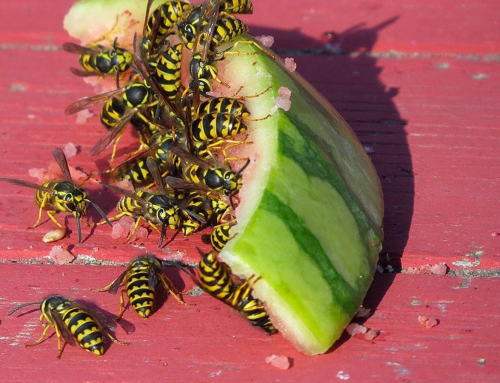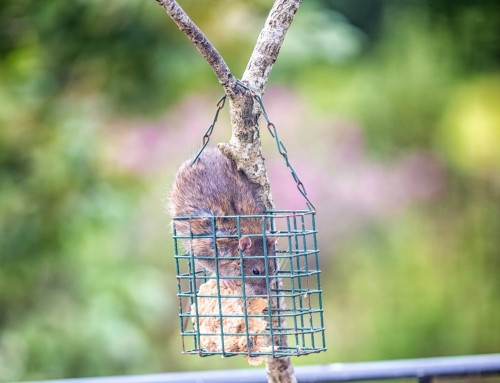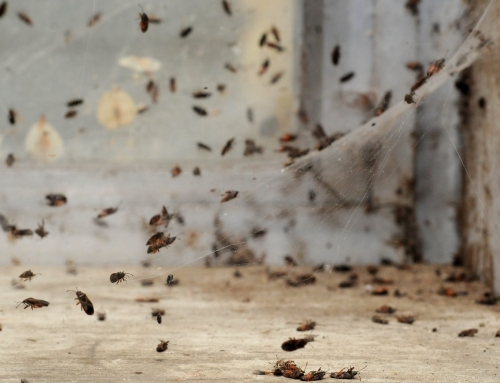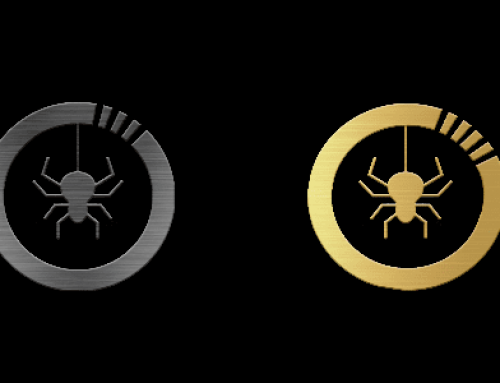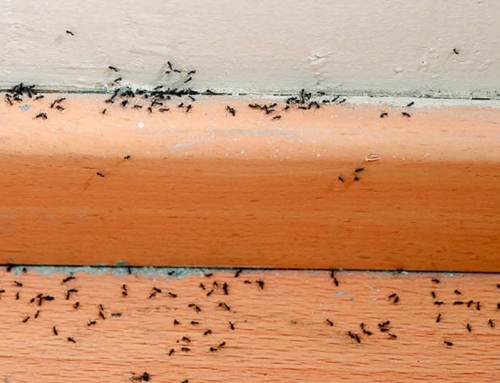Ah, the topic of ants in the Okanagan. Complimentary to our fantastic weather during the summer months, many species of ants love to take up residence in our hot, beachside valley. With so many types of ants crawling around, it can be tough to decipher between the “a$$h@le” and the “annoying”, so we’ve listed them out for you in this post. With 92 species of ants listed in British Columbia, keep in mind we’ve only touched on the most frequent offenders in our region.
The easiest way to tell one type of ant from another is to look at the differences between the thorax and the petiole (waist). All ants carry the same three structural features: the head, the thorax and the abdomen. Each species will show subtle variations characterizing the petiole and the thorax, in most cases. For example, ants will show either one node or two in the waist region, which gives the impression of a notch in his midsection. Another differentiation lies in the thorax, which can either appear evenly rounded or bumpy.
In any case, identifying a specific species of ant can be difficult so feel free to leave the inspection to us professionals!

THE A$$H@LES
Carpenter Ants
Distinguishable features:
- Black in colour, ranging to yellow or red tint
- Much larger in size when compared to common pavement or garden ants (6.5 mm – 13 mm for workers, 20 mm – 25 mm for winged females)
- Petiole has one node (looks like one notch)
- Evenly rounded thorax
- No stinger
Why are they assholes?
Carpenter ants are wood destroying insects, which is not so cool when they come after your home and related structures. These wood-munching excavators have the ability to cause significant damage by eating through wood debris when tunneling and building nests or galleries, which results in the major repair or replacement of property. Although they do not have stingers, their jaws are extremely powerful (as seen by flawlessly chomping through your home!) and they have been known to bite through human skin (in rare cases) when defending their nests. To boot, these ants spray formic acid while biting its attacker, which causes a minor burning sensation.
Where to find them?
- Window frames
- Roofs
- Patios, decks and porches
- Near food and water areas
Keep in mind these pests are great foragers, and the workers will easily hunt for food as far as 90 metres from the nest, marking their path with pheromones.
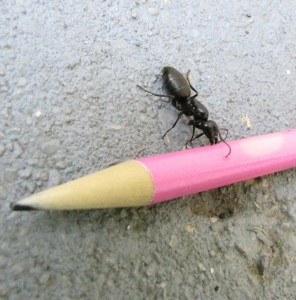 Carpenter Ant
Carpenter AntWhat do they eat?
Carpenter ants are both predators and omnivores, eating everything from other insects and invertebrates to plants and nectars. Although they have ample wood readily available from tunneling, they discard any shavings which leaves what we call “frass” (sawdust-like wood material) at the tunnel entrance. With carpenters hunting for food so far from the nest, you will often see them enter homes and structures through openings in the structure or by using foliage as a highway. Since they require proteins and carbs to live, they will make use of numerous food items in your kitchen!
Neat fact: the Okanagan has an entirely exclusive breed of carpenter ant – which we call black/black/red. The name, not entirely clever, is derived from the colour markings on the head, thorax and abdomen, respectively.
European Fire Ants
Distinguishable features:
- Reddish in colour
- Fairly small in size, (workers usually range between 2 mm and 6 mm)
- Petiole has two nodes or notches
- Definite stinger
Why are they assholes?
Avoid these heathens at all costs! Being stung by these jerks will cause significant pain. Fire ants have no qualms about challenging any animal who might be in their path. Using their jaws to hold on, they will then sting the target, releasing venom. This venom will most commonly result in irritation, a burning sensation and pain – although people with very sensitive skin have noted enlarged swelling, nausea, severe sweating and chest pain, and even fatality if not treated quickly. Jeez!
Where to find them?
Fire ants love to hang out in the sun, but would rather build their home base around a moist patch of soil or leaves. They will not forage as far from the nest as carpenters, which is why it’s favorable for them to build in close proximity to residential and commercial buildings. Other exceptional shelter spots for these painful pests include rotting wood and mossy areas, where available.
This summer in the Okanagan has been exceptionally dry, which they are not a fan of despite loving a good sunny day, so we’ve seen them in less quantity than average for this time of year (woo hoo!).
What do they eat?
Fire ants are yet another omnivorous species and – much like the carpenter ant – will seek nutrition from both animal (dead or living) and plant-based energy. Despite their tiny size, don’t let these guys fool you: fire ants will prey on living insects and other small mammals hundreds of times their size (what an asshole move, guys). Baby reptiles, fowl, and even calves and fawns have been known to fall victim to the almighty fire ant. Other prey of less nominal size include other ants, caterpillars, grasshoppers and spiders. When these killers aren’t in the mood for something living, they also enjoy the sweet nectars in plants and flowers as well as any germinating seeds within the area of their nest. If provided with an entrance point to residential and commercial homes, you can bet fire ant workers will be in your kitchen checking out your sweets, syrups, proteins and carbs.
Pro tip: Try not to leave any food out after dining in the yard. Ants of all types will LOVE to have your leftovers!
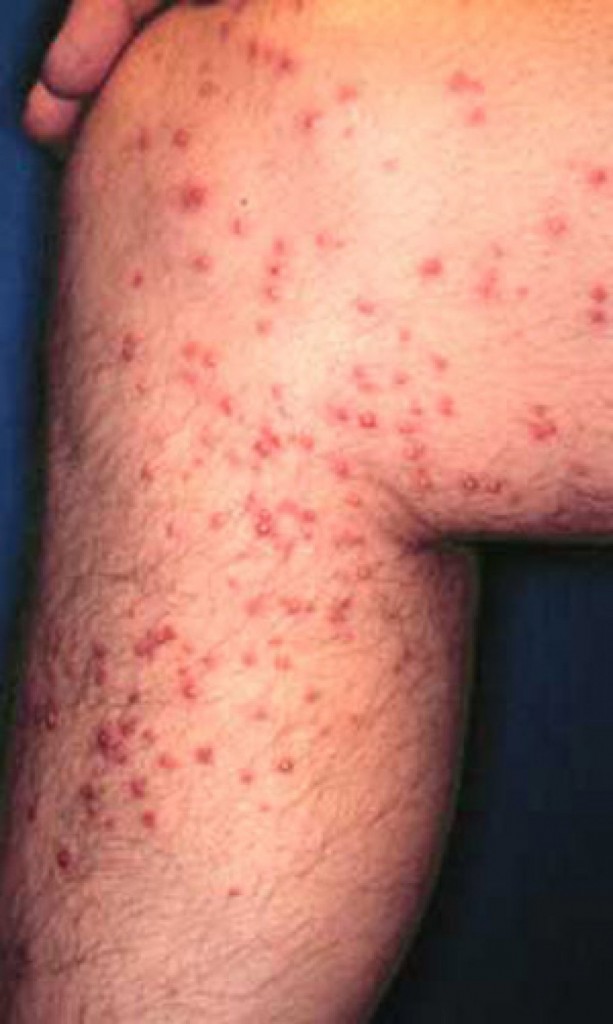 Fire Ant bites
Fire Ant bitesTHE ANNOYING
With so many species of ants in the Okanagan, more often than not you will hear us describe non-structural and non-personally damaging ants as “nuisance” ants. Odorous house ants and sand ants are among the many species that fall into this category. These guys will not bore into your wood structures or cause great physical pain, but will simply show up to the party uninvited and take up residence in your space, for the most part. We briefly touch on a couple types of these ants below.
Odorous House Ants
Distinguishable features:
- Black/brown in colour
- Quite small (2.2 mm – 3.3 mm in workers)
- Bumpy and rigid thorax
- Odour emitted from corpse when crushed
Odorous house ants are our most common nuisance offenders. The easiest way to tell them apart from other ants is by the rotten smell emitted from their bodies when crushed (gross, right?!). Our smelly foes know no bounds between “personal space” as you will find them both indoors and outdoors, rummaging around for food 24/7. Not a fan of rain, they are known to take up residence inside during wet conditions, even going as far as hiding out inside walls or beneath floors. Any food areas left unsealed are contenders for these ants. They will forage by lining up in trail formation and, because of this, are quite easy to spot! Madeline, anyone?
Sand Ants (Pavement Ants)
Distinguishable features:
- Black/brown bodies, light-coloured legs
- Quite small (2.3 mm – 3 mm)
- Lined markings on thorax
Sand ants, or pavement ants, are known for the lumps or “volcanoes” of sand material left at the cracks between pavement or on hard soil left when digging up to the surface. They do have the ability to sting, however the irritation left is much milder than that of the fire ant. Pavement ants enjoy munching on many of the foods we human folk consume, which makes our homes and backyards a choice ant cafeteria. Locating their nesting areas can become quite the task, and us professionals must be quite diligent in tracking and removing the home base.
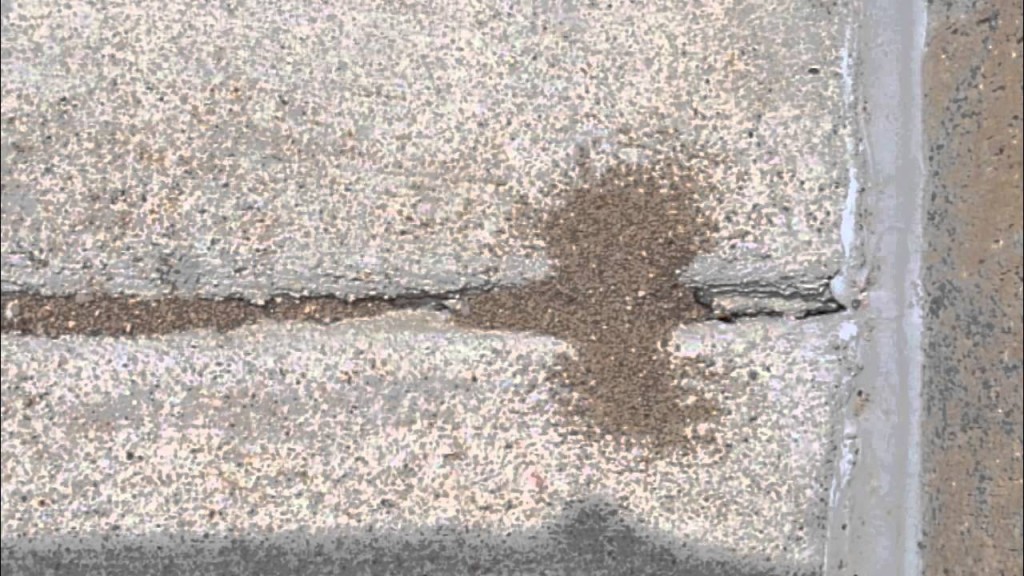 Pavement Ant volcano
Pavement Ant volcanoWith any ant infestation, we remind you that store-bought pest control products will often only treat the surface issue, if effective at all. It’s important to consider destroying the nest in order to remove the issue completely, and that different strokes are in place for different folks, ie: some species require unique treatment.



